Konch & The EU Furnish project¶
¶
In late 2020, I was part of an EU Furnish digital fabrication project - where I thoroughly tested designing and building microphones for acoustic recordings, DIY & some off the shelf amplifiers - in the process also understanding the relationship between electricity, cables, speaker impedances and how they all interact in a compact real world situation.
I extended the exploration of my final project as I was mainly focused on the audio interaction and design. As a result, I got to experiment thoroughly with building my own microphone, amplifer and check how can work with modularity together.
This project led to independently investigating and exploring several audio components for the audio interaction - the most interesting and successful of which was the P48 omni directional electret microphone, a highly resilient mic designed for use in acoustic ecology recordings.
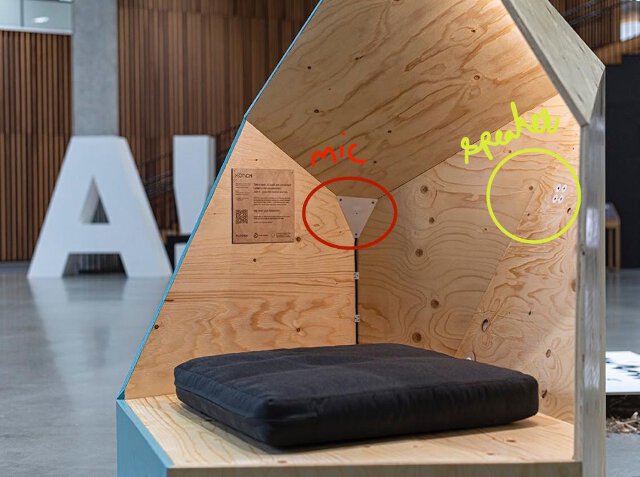
The Konch were a series of interactive chairs that could “talk to each other” at the press of a button. Essentially it functions like a walkie-talkie except no walkie - and it uses the wifi internet and razzberry rhino modules for the audio transmission.
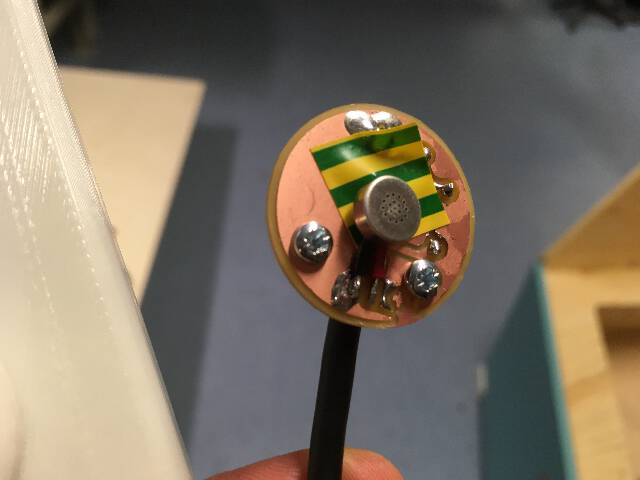
The P48 mic circuit is designed to be very tiny, and added to the cavity of the XLR input that goes into an audio recorder. The design was done in ki-cad and a number of Mics could be PCB-milled quickly.
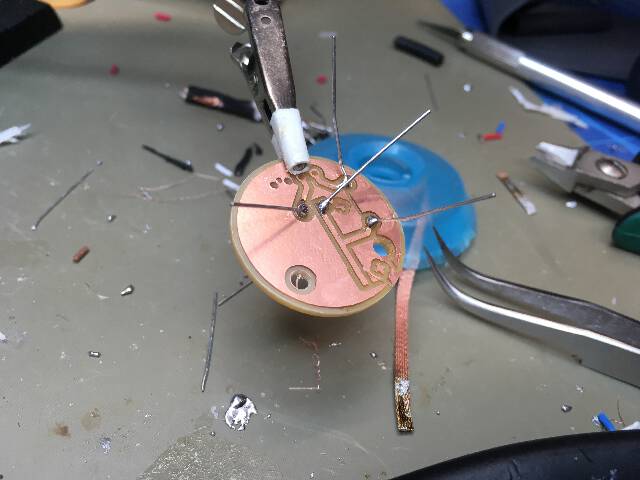
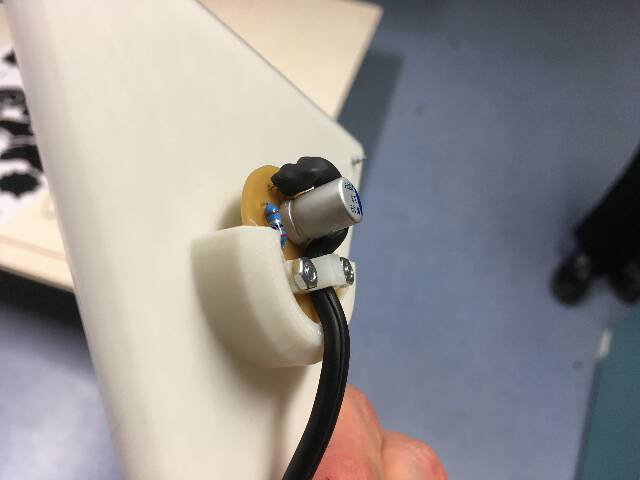
The 8 ohm speaker gave a great signal to noise ratio in both amplifying and receiving signals from these electret mics.
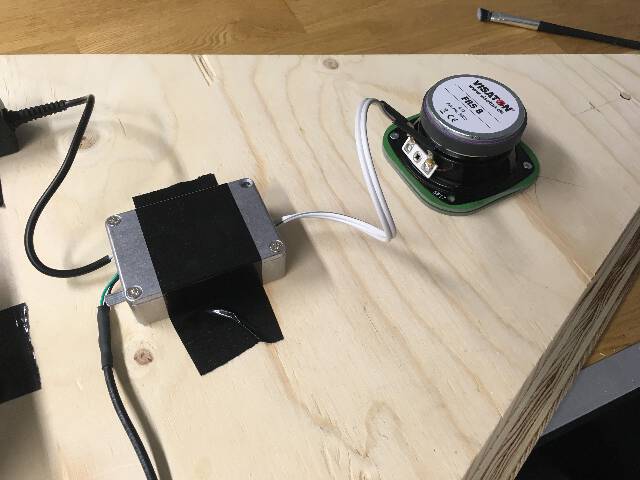

These audio developments greatly contribute to the project as well. Previously a microphone had been not included in the BOM and design feature list.
As seen from above excerpt, a quick visit on a couple of Indian chanting box sites revealed the request for customization and adding own mantras was quite high - and so far nobody seemed to be fulfilling this demand. So mics are planned to be integrated with the current design as well.
additional thoughts:¶
Why am I Choosing a standalone sonic object in the age of on-the-fly Alexas, Speakers, Headphones, and other Wireless devices?
¶
in a nutshell - it is “anti-AI” & “pro cybernetic”. While anything launched into the internet of things becomes a storehouse and catalyst for surveillance capitalism - this is an example of the complete opposite, it is launched into the “innernet” and has a storehouse of memory - of content that tends toward such trends in the west as “calm technology” or “mindfulness tech” and at its essence, a series of sounds to explore both the inner self and consciousness.
The answer is in the purpose of this object - it is not a passive object but created with a deep cultural aspect in mind. And there is both a front end aspect of the concept, and a deeper and subtler need for invisible information to be revealed.
Essentially, the mantra is a sonic representation of energy forms. At the same time, there are much contemporary experiments on how to design everyday “artefacts” to address the “invisible concept” of energy. Essentially a mantra box is already a cultural and archetypal product that could expand into these other forms of representation as an independent object.
When it comes to Sonification of energy use, there have been numerous attempts to create an non intrusive interface for the purpose - such as continuous soundscapes and internet of things that start “giving sound codes” such as washing machines and so on.
In somehow my intuitive opinion, everyday activities are largely actions that occur in “flow” - and on breaking down these activities, the outcome of energy saving which is a high level purpose is often at odds with “getting the stuff done” which is a goal or task oriented purpose. This is why the justification of creating and installing a sonic object, connected to the internet of things, yet functioning without - could be an interesting example. Th fact that this sonic object would exist as a cultural object independent of the current ecosystem of sound objects, would also help to create a unique aura around this particular piece - and likewise introduce and also evolve people’s understanding of invisible forces such as energy.
Artefacts allow the materiality of energy to be manifested, discussed and explored practically (Pierce and Paulos, 2010) and is the utilitarian intention behind the decision to start with the successful prototype if a relatively simple mantra looping box as a design object.
However, the DNA of this mantra box is that there is the possibility of a unique sanctity in bl
